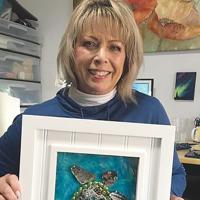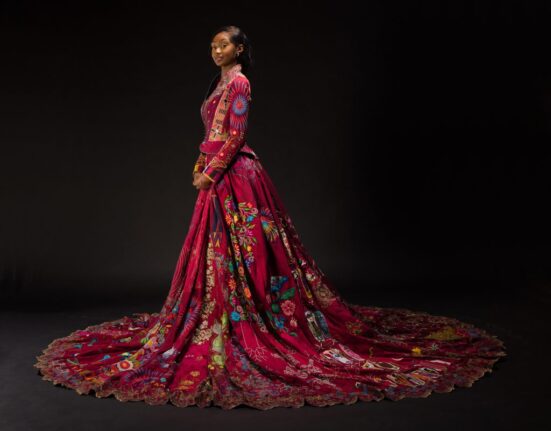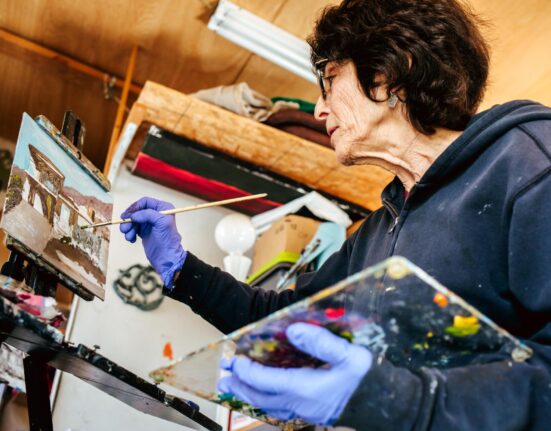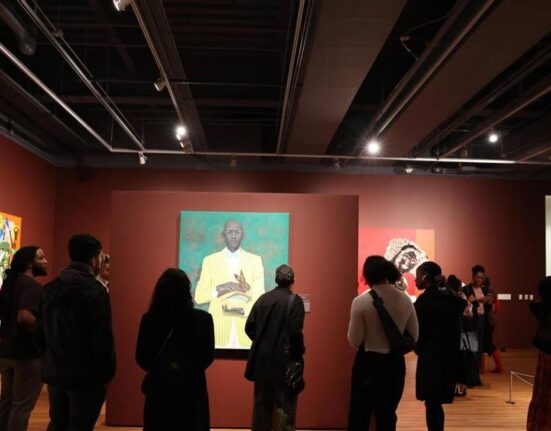For almost twenty years, Grigely has made an annual pilgrimage to Wilmington, New York, to think, to write, and, above all, to fish. He stays in a small cabin on the Ausable River, and when I visited, this past May, he smoked us a brown trout he’d caught that morning with his vintage Paul Young bamboo rod, made a few months before Grigely was born, in 1956. Normally, he wouldn’t have taken a fish so early in the season, he told me, but he wanted to see what was in its stomach. The answer: stonefly nymphs. He showed me a picture of one on his iPhone, which stays on silent mode.
Grigely speaks with a distinctive prosody, beginning slowly and picking up speed; he tends to put the emphasis on the last word of a sentence, particularly when, as often, it’s the punch line of a joke. He pronounces vowels with the slightly nasal intonation typical of non-hearing people. (The MoCA show’s title came from a conversation in which he said the word “warm”; his interlocutor heard “wham.”) Though he often collaborates with sign-language interpreters, and sometimes subtly signs as he talks, Grigely is primarily a speaker and a writer. When I arrived, late, I held up an apology I’d written in a little green notebook. As we sat down on the back porch, a pair of tawny waders hanging from a rafter, I quickly realized that most of the niceties I used to put a person, and myself, at ease seemed impossible in writing—or ridiculous. “Best to write?” I scribbled in the notebook before passing it over. (I’d already crossed out two false starts: “This I / How shoul.”) “I’ve got a recorder for when we start talking,” I wrote next.
Talking this way is formal, in both senses of the word: formalizing conversation, rendering it visible and tangible, can sometimes make it feel strangely serious. I found myself weighing my words, choosing not to ask a question that wasn’t perfectly phrased. Grigely would sometimes get up and do something while I was writing: clock a bird flying past, check on the wild rice boiling on the stove. This elasticity was strange at first, but it also made possible a new kind of conversation, with a tolerance for backtracking, and the expectation that communication itself was worth the wait.
“I’m interested in the most meaningless stuff people say that has meaning in it,” Grigely told me. Some of the notes in his archive are simple statements: “okay,” “chicken or fish?,” “white or red?” In his work, Grigely said, he seeks to portray “conversation as a kind of still-life,” an art of the mundane, with greetings and gossip instead of glistening grapes or wilting orchids.
Nearby was a desk stacked with faux-tortoise-shell boxes filled with the flies Grigely ties each winter. Flies, too, are a kind of art: they’re meticulous efforts to preserve, understand, and represent the most exquisitely mundane of creatures, using repurposed materials. There’s the standard cul de canard—feathers from the rump of mallards, which Grigely receives by post in fat-stained cardboard envelopes—and badger and moose fur, and what’s known to British anglers as Tup’s wool: wool shaved from a ram’s testicles. (Grigely’s got a “sheep lady.”) One of the flies in Grigely’s arsenal was invented in the eighties, by an angler named George Close, for use on Wisconsin’s Wolf River. It’s made of deer hair and the polyester Antron carpet that Close ripped out of his fishing cabin. To tie his own, Grigely managed to procure, through Close’s great nephew, a shaggy square of the carpet, whose fibres, he wrote in an Instagram post, were “conveniently spectrumized” to resemble the thorax of a Brown Drake.
To the untrained eye, a fly looks like the kind of thing you would sweep into a dustpan, just as most conversations might strike us as perfectly insignificant. But, if you look closely, even the simplest utterance, like a fly, satisfies a specific need in a complex situation. When you fish, Grigely explained, “you’re reading the currents, the air temperature, the water temperature, cloud cover. You’re reading the insects that might be on the water. You’re trying to put together the story of the moment, to figure out what the fish might be feeding on.” Both angler and artist are always reading, attuned to details that others might gloss over.
In the several days I spent with him in Wilmington, I saw Grigely give away a number of flies in little white cardboard boxes. But I saw him collect only one note, from a conversation after a barbecue at a neighbor’s house. It lay on the kitchen counter, where our brown trout had lain the day before. “I left garage door open last nite,” it read. “Almost killed Paula’s tomatoes.”







